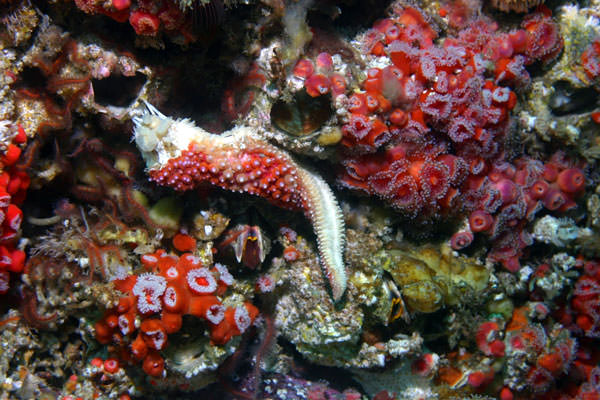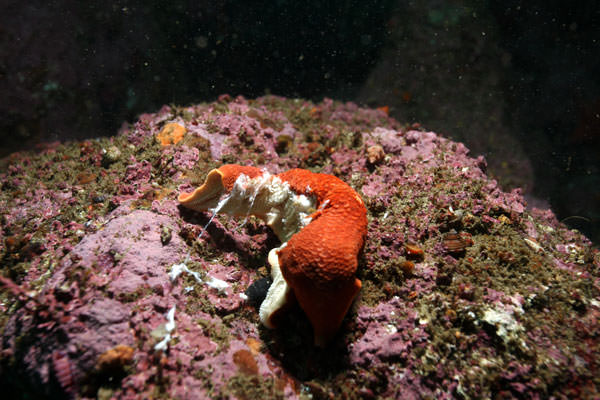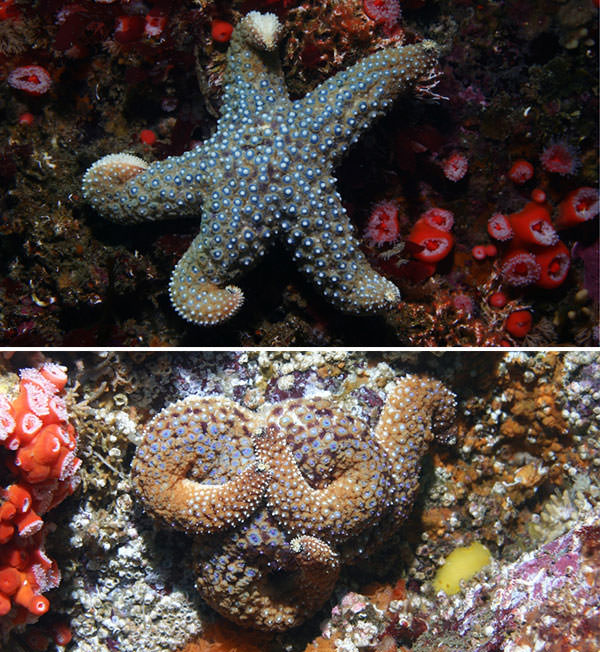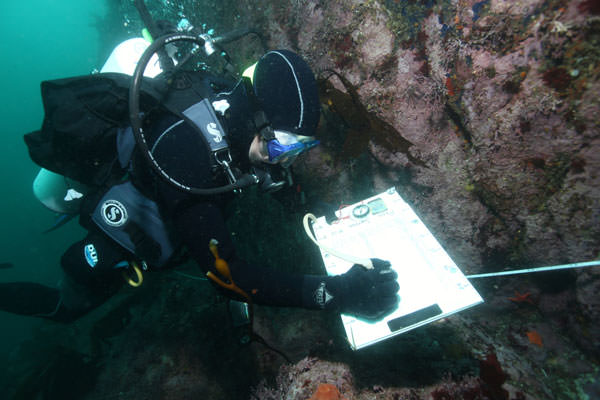Sanctuaries Without Stars
By Liz Liang
April 2014

If you've ever been diving, kayaking or exploring tide pools along the U.S. West Coast, you've probably seen colorful sea stars clinging to the sides of rocks and pilings. That sight has become less and less common in national marine sanctuaries along the Pacific Coast in recent months, as a mysterious illness has laid waste to entire populations of sea stars from Mexico to Alaska.
Beginning as early as June 2013, sea stars along the entire Pacific coast began dying from what has become known as "sea star wasting syndrome," or "S3." The ailment, which affects over a dozen species of sea stars in a variety of ocean landscapes, is a gruesome way to go. Symptoms include a deflated appearance, white lesions and twisted arms, followed by softening tissue, loss of arms, and death. The disease progresses rapidly, often killing its victims within a matter of days.

Dr. Steve Lonhart, senior scientist for the Sanctuary Integrated Monitoring Network (SIMoN) at Monterey Bay National Marine Sanctuary, said he had seen something similar happen to sea stars in Southern California in the early '90s, but nothing on this scale.
"I was surprised to see not only how many individual sea stars were dying, but also how many different species," Lonhart said. "Later, when I learned the entire western U.S. was actually affected — that was very shocking."

Lonhart said that although previous mass mortality events have struck populations of echinoderms (which include sea stars and sea urchins), none have been as widespread or fast-acting as S3. "The extreme geographic extent and rapid progression of this disease is unknown in recent history," he said. "It is very different from mortality events in the past."
Through SIMoN, a long-term monitoring program that tracks environmental changes in three national marine sanctuaries in California, NOAA scientists have been watching closely for wider impacts caused by the disease. Given that sea stars are important predators, the effects of such a widespread loss could be potentially devastating to sanctuary marine life in the rocky intertidal and kelp forests.
"Any time you disrupt the food web, and in particular higher-order predators, there are usually unexpected consequences that trickle down," Lonhart said.

In collaboration with local university researchers, sanctuary scientists have been investigating the outbreak and documenting the progression of the disease in central California since October 2013. In an effort to identify the potential pathogen and conditions responsible for S3, SIMoN scientists and their partners collected extensive survey data and tissue samples, but the cause remains a mystery that several research institutions are working hard to unlock.
The good news? The worst seems to be over, at least. Lonhart noted that the number of new cases of S3 seems to be dwindling, and the most dramatic part of the die-off may have passed. For now, all that sanctuary scientists and managers can do is to continue to gather data, and keep a watchful eye on the health of our sanctuaries without stars.

